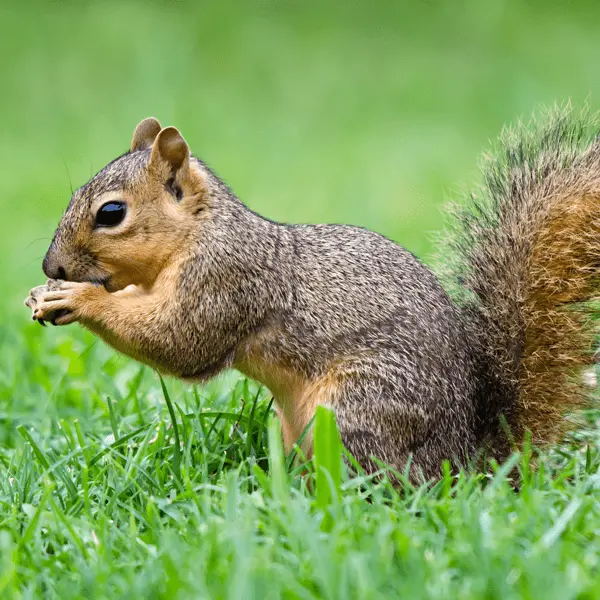Fox Squirrels in Manhattan, Kansas City Metro, and surrounding areas
Fox squirrels are found throughout the eastern and central United States and have also been introduced into cities in the western U.S. Fox squirrels spend most of their time in trees during the day, foraging for food. These squirrels are omnivores, eating everything from plant matter to insects and birds. Like other tree squirrels, fox squirrels will enter homes, building nests in attics, walls, chimneys, rooflines, and inside garages. Fox squirrels carry diseases such as tularemia and ringworm that are transmissible to people.
Fox Squirrel Habitat
Fox squirrels prefer open, savannah-like habitats, where trees are widely spaced and the understory is open. Fox squirrels need large trees with cavities or holes in them for building nests to raise their young. They are most common in oak-hickory forests but are also found in live oak, mangrove swamps, and pine forests. Because of this habitat preference, fox squirrels do well in urban and suburban settings. These pests will enter homes and attics, causing damage to wiring, gardens, and lawns.
Fox Squirrel Behaviors, Threats, or Dangers
Fox squirrels sometimes cause damage around homes and gardens, where they feed on immature and mature nuts, fruit, and a variety of other plants. During the fall, squirrels dig holes in gardens or in turf where they bury nuts or other seeds. This storing of food, which they may or may not ever retrieve, raises havoc in the garden and tears up a well-groomed lawn. Squirrels sometimes gnaw on telephone cables and may chew their way into wooden buildings or invade attics through gaps or broken vent screens. They also have a tendency to strip bark to feed on the juicy inner bark layer (cambium), causing injury to trees. If you are having an issue with fox squirrels, it is best to consult a professional wildlife control company for removal.





